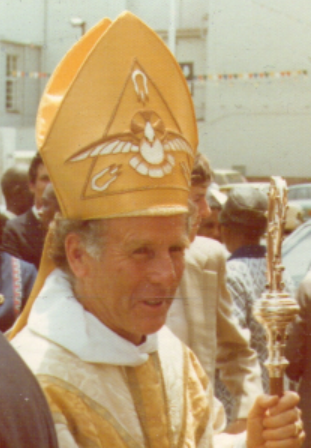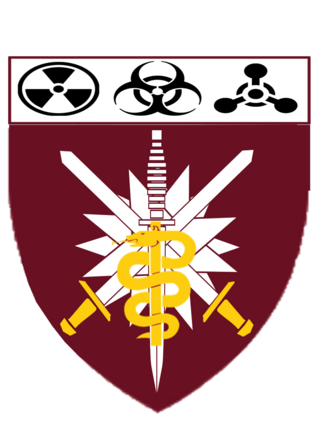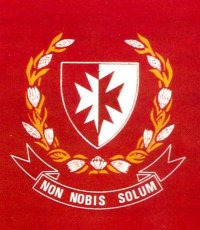
Durban, nicknamed Durbs, is the third most populous city in South Africa after Johannesburg and Cape Town and the largest city in KwaZulu-Natal. Durban forms part of the eThekwini Metropolitan Municipality, which includes neighbouring towns and has a population of about 3.44 million, making the combined municipality one of the largest cities on the Indian Ocean coast of the African continent. Durban was also one of the host cities of the 2010 FIFA World Cup.

The South African Army is the principal land warfare force of South Africa, a part of the South African National Defence Force (SANDF), along with the South African Air Force, South African Navy and South African Military Health Service. The Army is commanded by the Chief of the Army, who is subordinate to the Chief of the SANDF.

The University of KwaZulu-Natal is a university with five campuses in the province of KwaZulu-Natal in South Africa. It was formed on 1 January 2004 after the merger between the University of Natal and the University of Durban-Westville.
Ezemvelo KZN Wildlife is a governmental organisation responsible for maintaining wildlife conservation areas and biodiversity in KwaZulu-Natal Province, South Africa. Their headquarters is in Queen Elizabeth Park situated on the northern slopes of Pietermaritzburg, the KwaZulu-Natal provincial capital. Prior to 1994, it was known as the Natal Parks Board.

The South African Military Health Service is the branch of the South African National Defence Force responsible for medical facilities and the training and deployment of all medical personnel within the force. Though unusual, as most national militaries integrate their medical structures into their existing service branches, the SANDF regards this structure as being the most efficient method of providing care and support to the SANDF's personnel.
Pinetown is a large area and former independent city that is now part of the eThekwini Metropolitan Municipality, based just inland from Durban in KwaZulu-Natal, South Africa. The town is situated 16 km north-west of Durban and 64 km south-east of Pietermaritzburg.
Queensburgh is a town in KwaZulu-Natal, South Africa that is situated inland (southwest) from Durban and now forms part of eThekwini, the Greater Durban metropolitan area.

The Durban Light Infantry is a Motorised Infantry regiment of the South African Army. It lost its status as a Mechanised infantry regiment in 2010 in line with the rationalisation of resources. As a reserve unit, it has a status roughly equivalent to that of a British Army Reserve or United States Army National Guard unit.
Chatsworth is a large township in KwaZulu-Natal, South Africa established in the 1950s to segregate the Indian population and create a buffer between the white suburbs of Durban to the north and the black townships of Durban to the south. Located in the Southern Durban basin and roughly bordered by the Umhlatuzana River in the North and Umlaas River in the south, the suburb is made up mainly of Indian/Asian and Black African people.

The South African Army Engineer Formation is the controlling entity of all South African Army military engineering units. The Formation is currently commanded by the General Officer Commanding (GOC); Brigadier General D.W. Nkosi, as of early 2013.
Lieutenant General Vejaynand Indurjith Ramlakan was a South African military commander. A medical doctor, he served in Umkhonto weSizwe (MK), the military wing of the African National Congress, during the liberation struggle against the South African government in the 1980s, and transferred to the South African National Defence Force when MK was incorporated into it in 1994.

Philip Welsford Richmond Russell, was a South African Anglican bishop.

Metrorail KwaZulu-Natal is a network of commuter rail services in and around the city of Durban in KwaZulu-Natal province, South Africa. It is operated by Metrorail, a division of the Passenger Rail Agency of South Africa (PRASA).

The Joint Operations Division is a component of the South African National Defence Force tasked with conducting Joint Operations involving the various arms of the SANDF.

Natal Command was a Command of the South African Army. It was headquartered in Durban, South Africa. By the 1980s, it was responsible for the security of the region, forming the primary level of command for military operations in support of the Police. It also provided logistic, administrative and service support to units and formations operating in its area of responsibility.

The King Shaka Regiment is a reserve motorised infantry battalion of the South African Army.

6 Medical Battalion Group is a Medical Battalion in the South African Military Health Service (SAMHS). SAMHS is the fourth Arm of Service of the South African National Defence Force (SANDF).

The South African Military Health Service Mobile Military Health Formation is the SANDF military special operations health capability. The formation operates two regular force medical battalions, with 7 Medical Battalion Group providing support to the South African Special Forces Brigade and 8 Medical Battalion Group focusing on airborne operations. Three reserve units, 1 Medical Battalion Group, 3 Medical Battalion Group and 6 Medical Battalion Group fall under the command of the formation.













